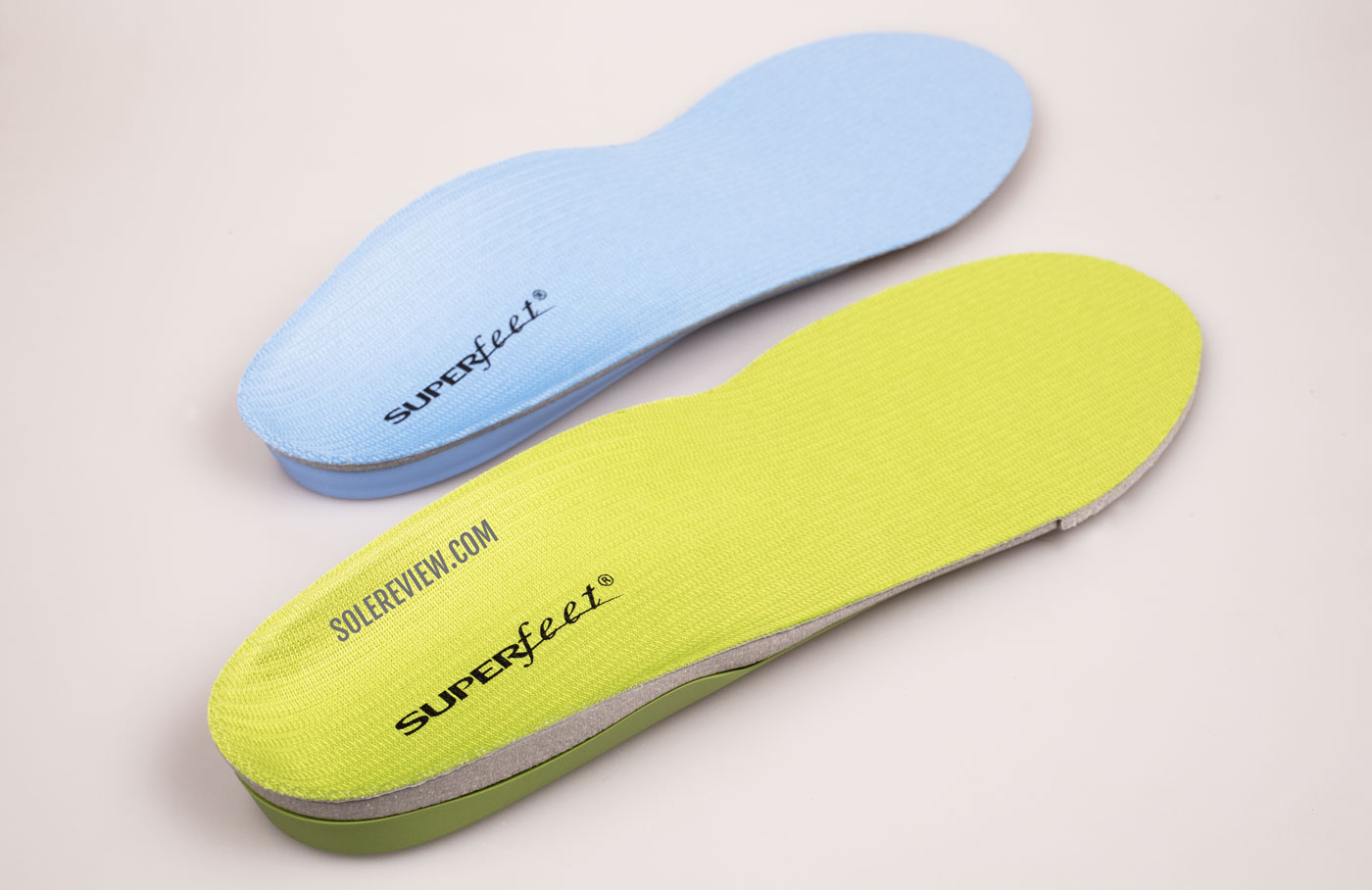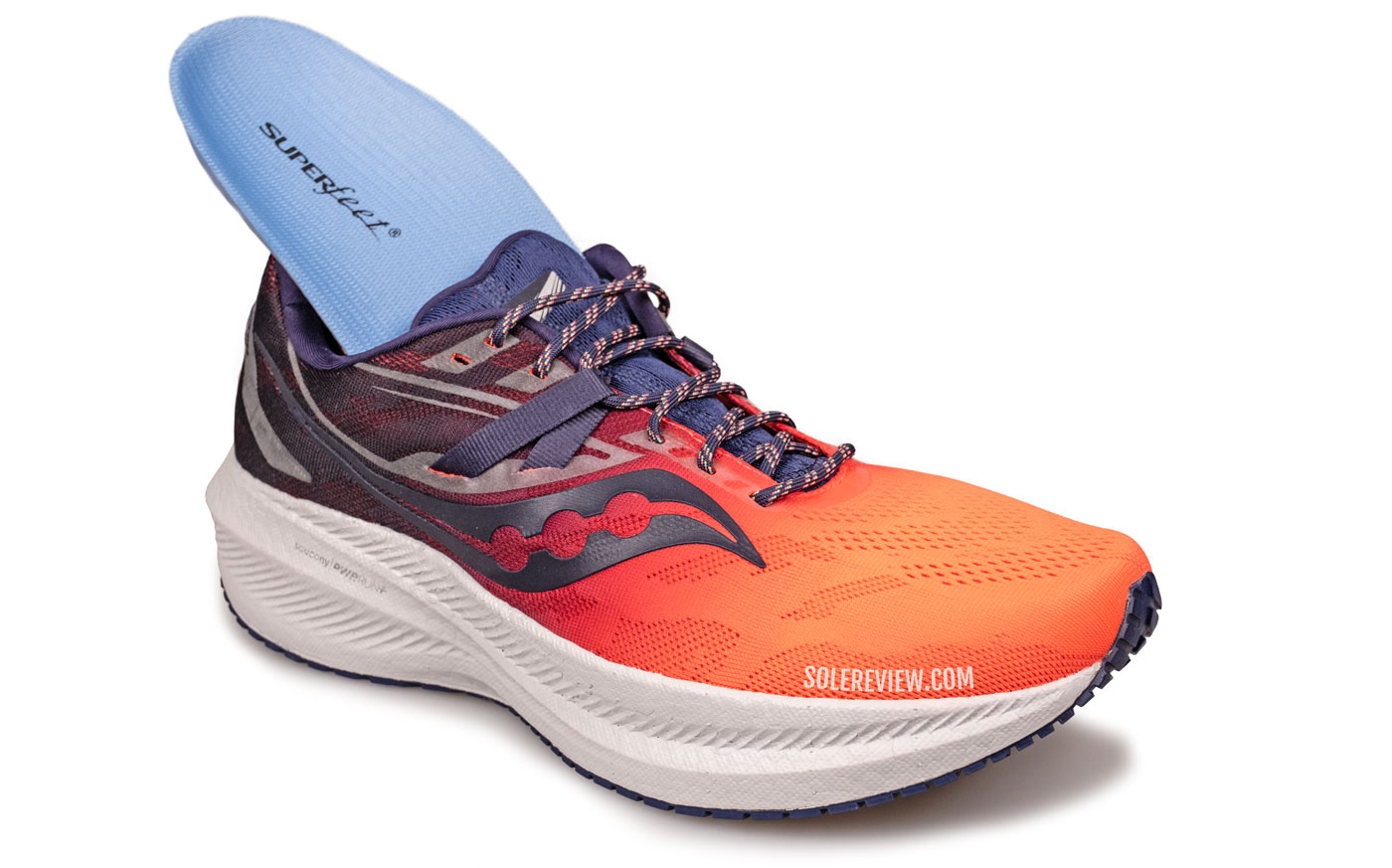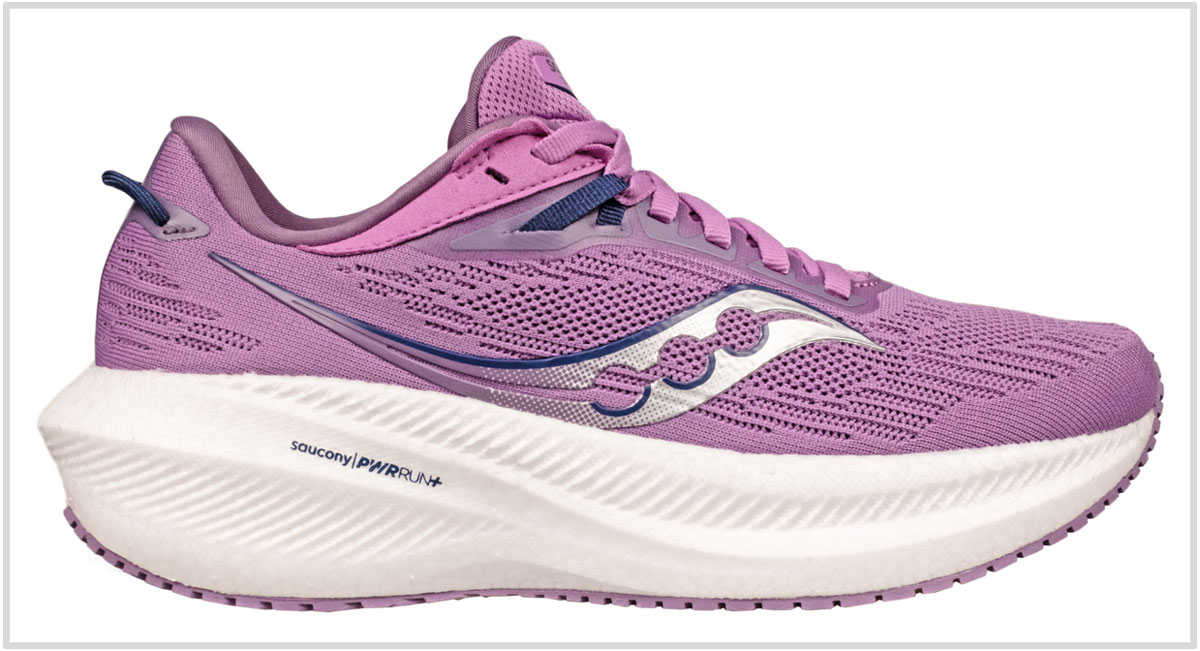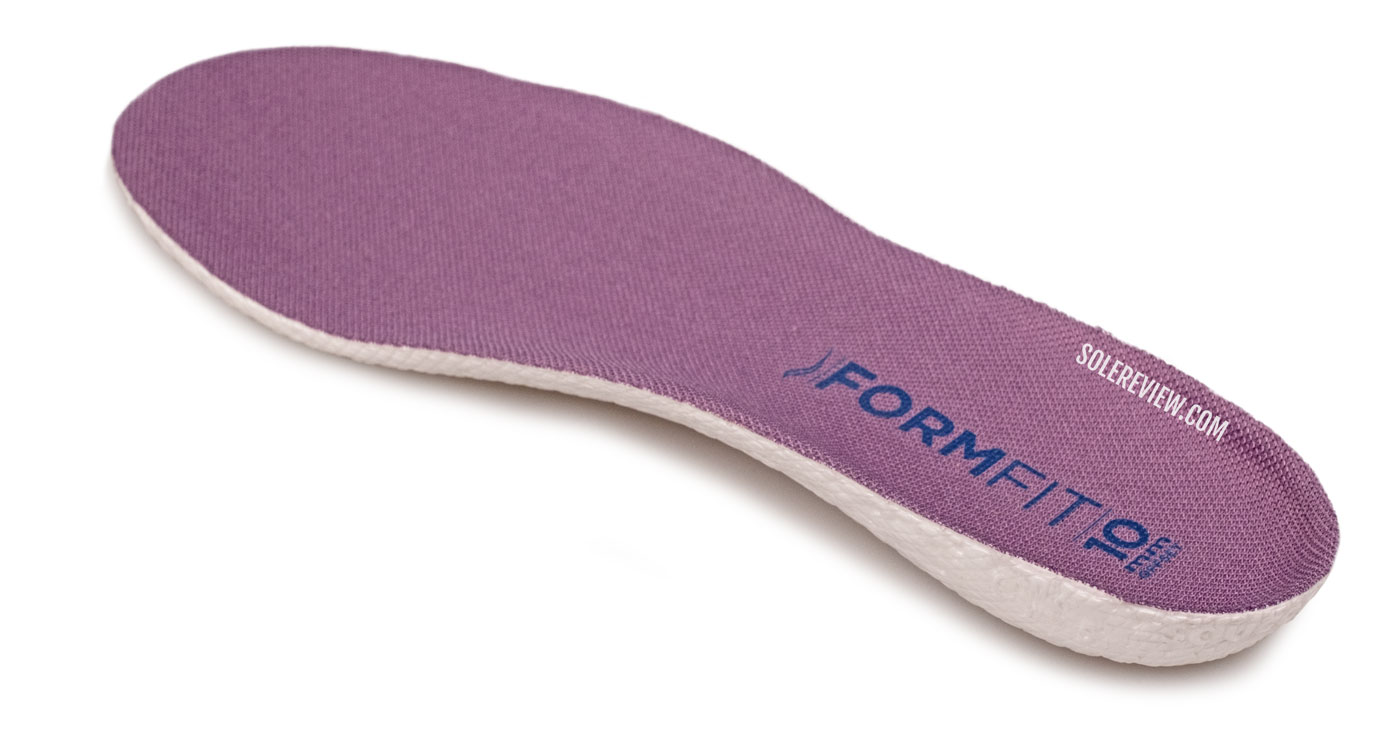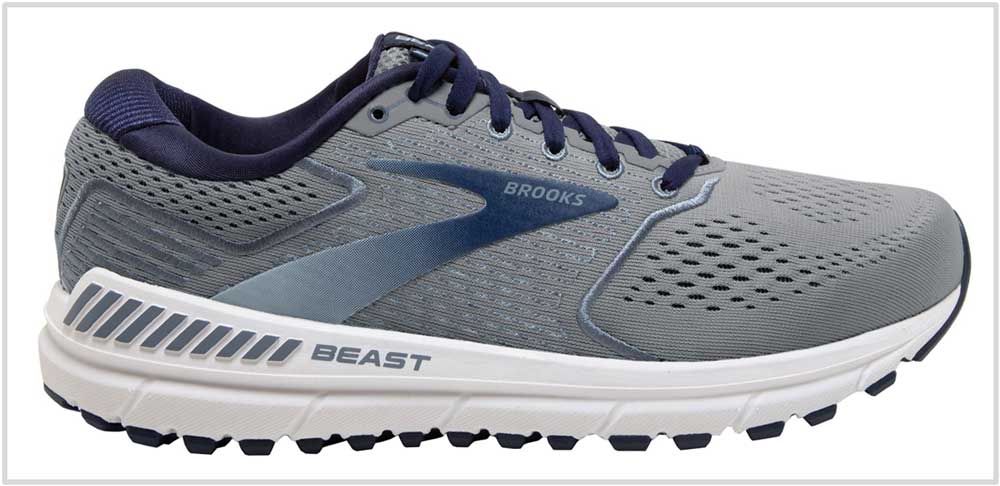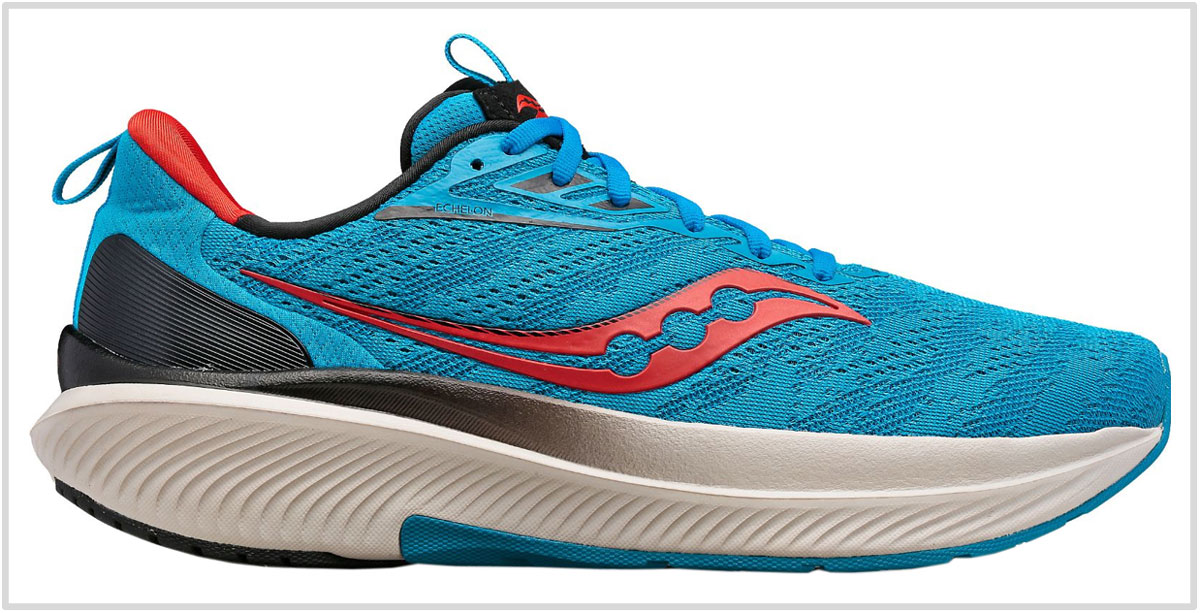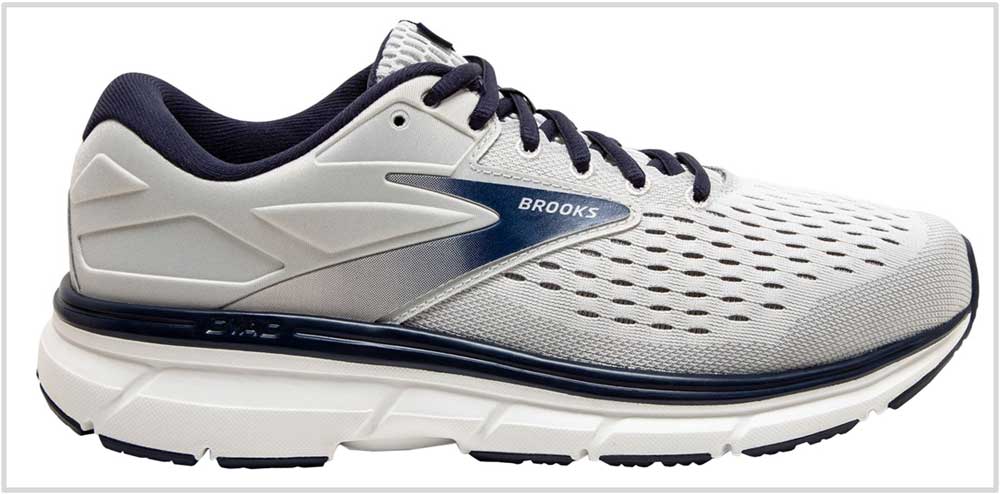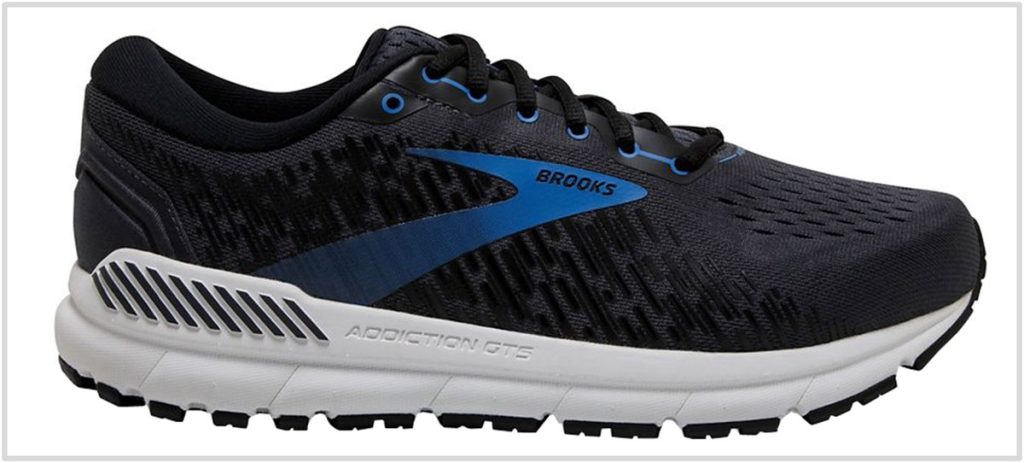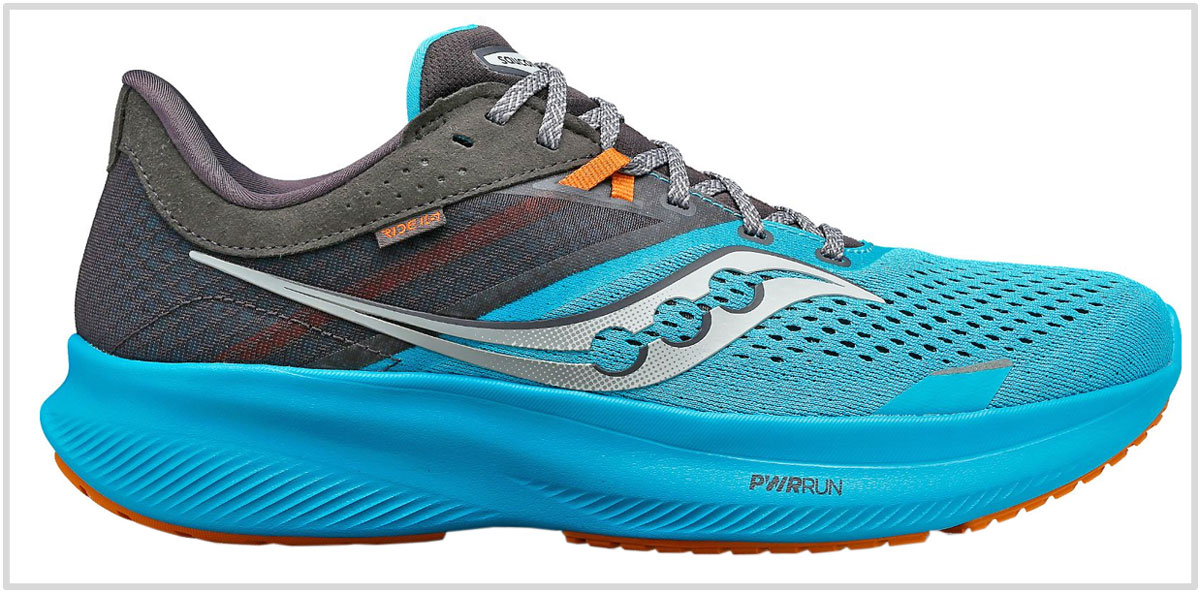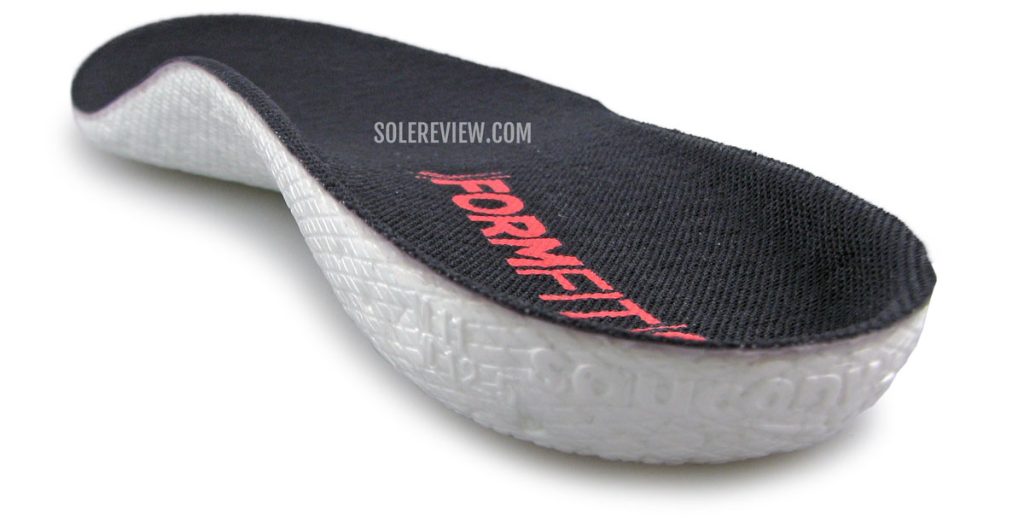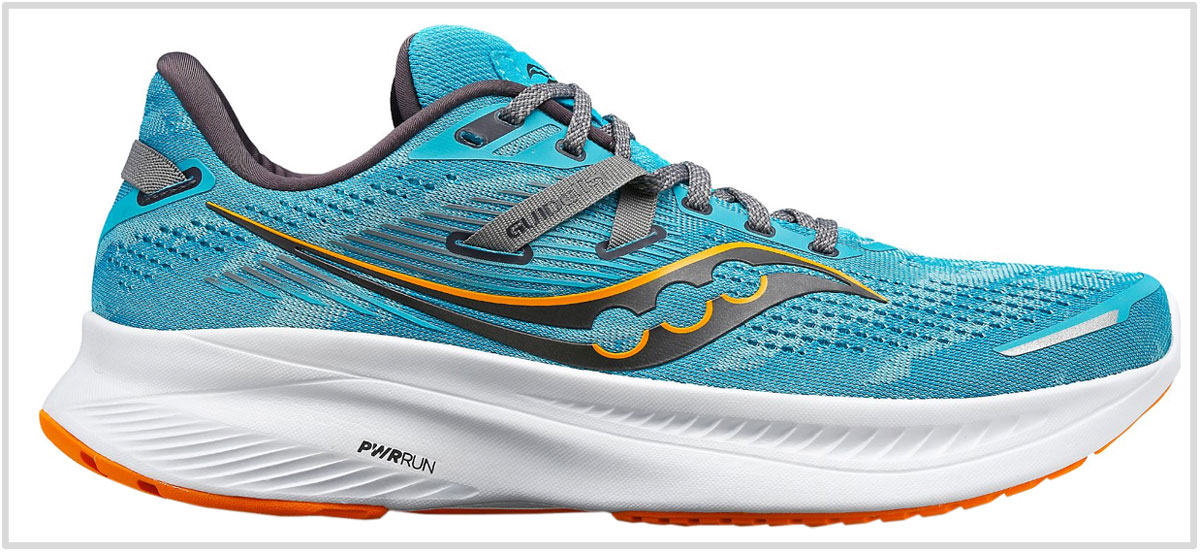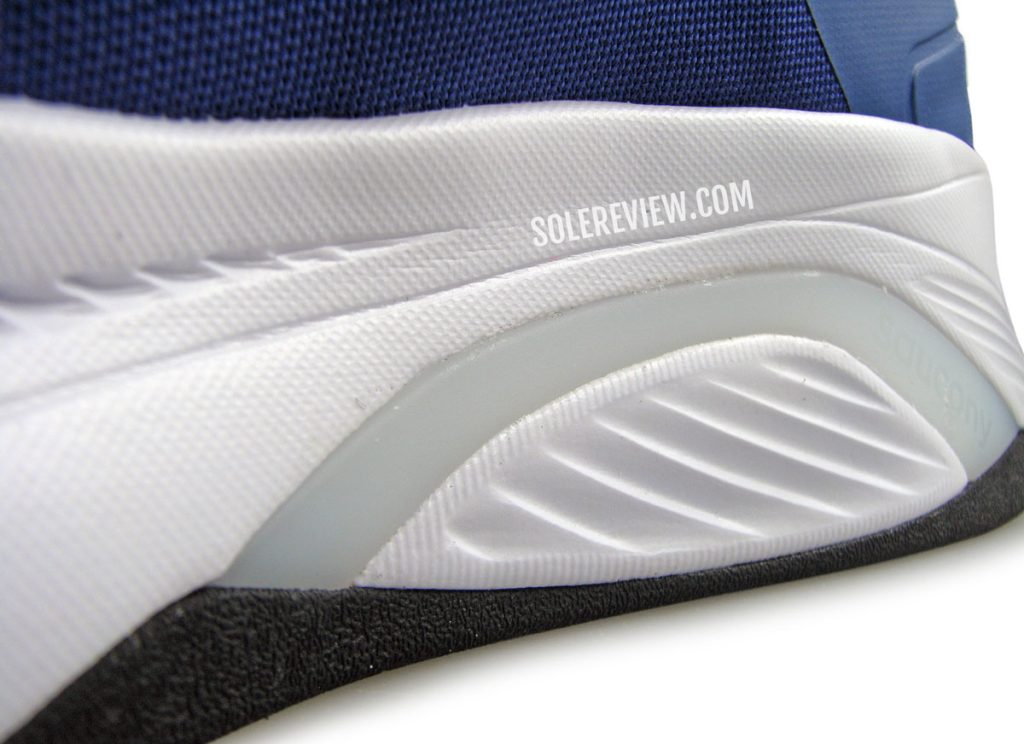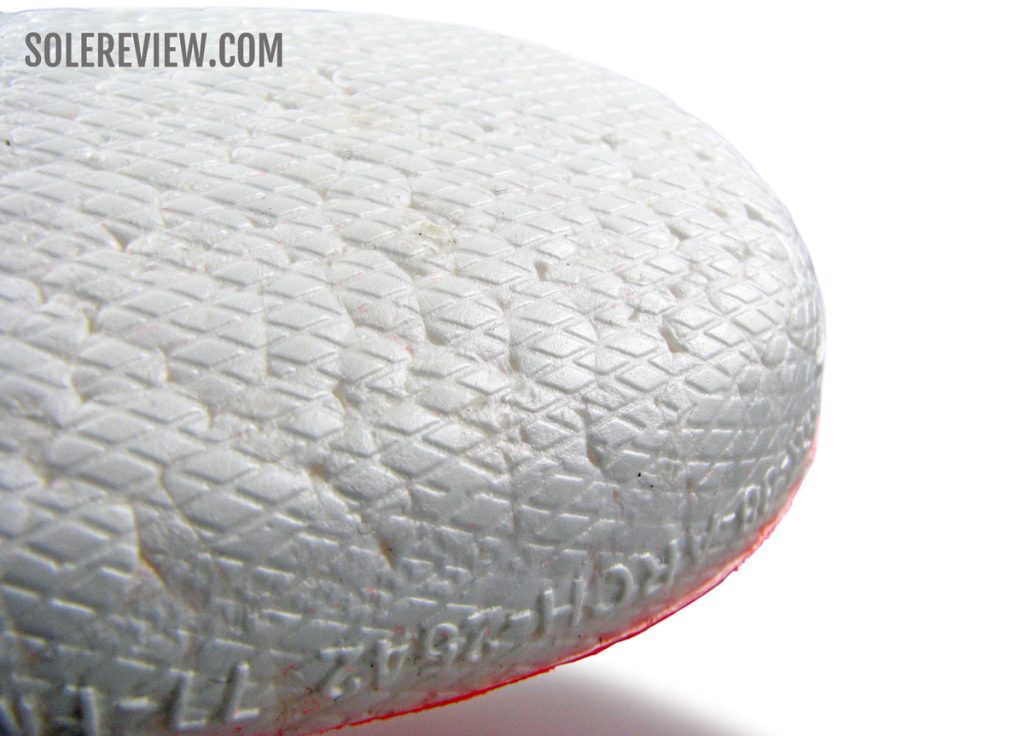This article has been updated with current models for January 2024. The Saucony Kinvara 14 has been removed. Except for the narrower ‘B’ width, the women’s models are identical to men’s.
In this product guide:
- 1. Factors to consider
- 2. Best cushioned trainer for an orthotic: Saucony Triumph 21
- 3. Best stability trainer for an orthotic: Brooks Beast 20
- 4. Best stability trainer for an orthotic: Saucony Echelon 9
- 5. Best supportive trainer for an orthotic: Brooks Dyad 11
- 6. Best supportive trainer for an orthotic: Brooks Addiction GTS 15
- 7. Best neutral daily trainer for an orthotic: Saucony Ride 16
- 8. Best supportive daily trainer for an orthotic: Saucony Guide 16
As if buying running shoes wasn’t complicated enough, here’s another fun thing to do – finding a pair that can accommodate a custom orthotic or aftermarket insole.
There are hundreds of running shoe models in the market. So how do we find a spacious shoe to accommodate a thick insert without severely affecting the fit and ride dynamics?
The shoe-insole compatibility also depends on whether we’re talking about an all-foam orthotic or structured insole with a rigid frame.
So what happens if an overly cushioned or structured insole is inserted into just any running shoe?
If the existing (stock) insole is thinner than the incoming orthotic, then the upper fit changes for the worse.
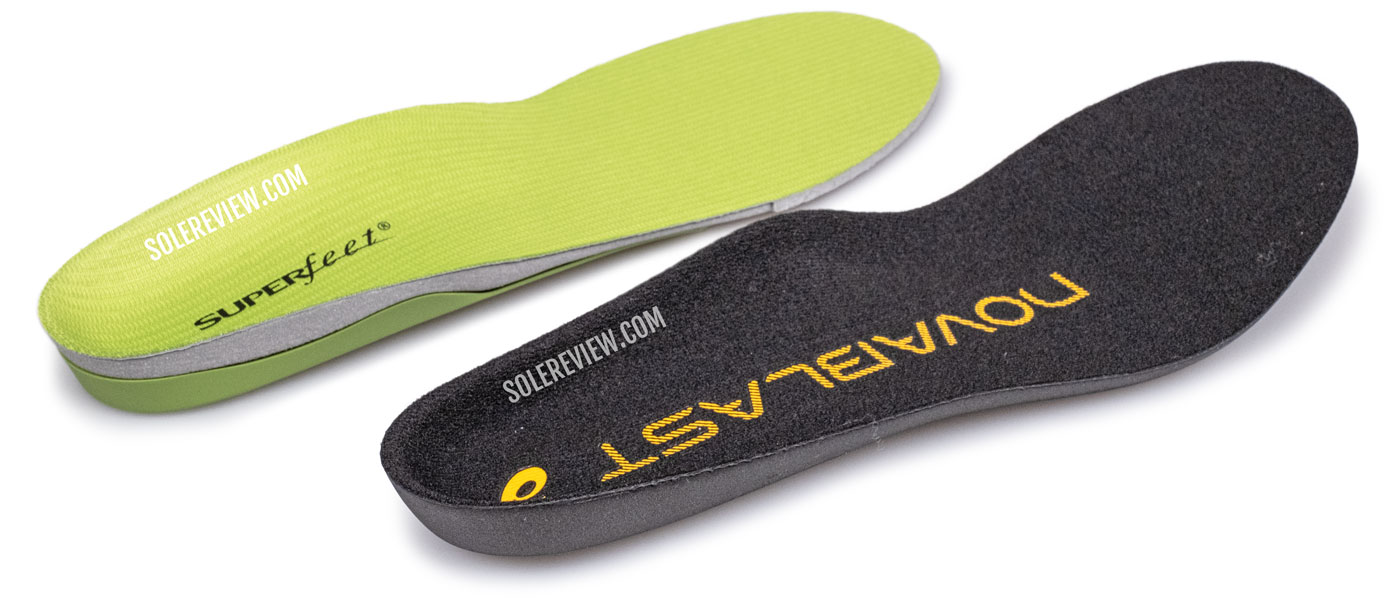
The Novavblast 3’s insole is thinner than the structured insoles such as the Superfeet Green and Superfeet Blue. So inserting an orthotic will make the upper fit tighter.
A thicker insert will push the feet upwards to create a tighter and uncomfortable fit. The foot will also sit higher inside the shoe, potentially resulting in heel slippage and a tighter fit over the instep.
Off-the-shelf and custom insoles can be loosely classified into three groups. The first kind is a cushioned orthotic made of foam or foam+gel.
These insoles are designed to provide additional cushioning with optional arch support. A Spenco RX Comfort insole, or the Spenco Arch Cushion would be examples of this construction.
The second kind is a cushioned-support insole. Here, a soft foam base is layered over a supportive frame that’s usually situated under the midfoot and heel. This category forms the majority of aftermarket orthoses, with the Spenco Total Support being an example.
Corrective insoles are the third kind. If you’re familiar with the uber-popular Superfeet Green, then you know what we’re talking about.
Here, a rigid frame made from Nylon or TPE cups the foam layer. Technically speaking, even the first two insole categories can be ‘corrective’ from a functional standpoint. Having said that, rigid molded frames are less pliable than their counterparts made of foam or Gel-Foam hybrids.
An orthotic can be either thick or thin in any of the said categories. For instance, the Superfeet Carbon is a ‘corrective’ insert by our definition but its thinness allows it to be placed inside most running shoes.
A few things need to be considered when matching a shoe with orthoses. With the rare exception, most stock insoles provided with running shoes do not have a heel-to-toe offset. The insole thickness stays the same throughout its length; insoles are ‘zero drop’ components.
The same thing can’t be said of custom or aftermarket insoles. Many inserts have a higher heel, thus adding thickness to the overall rearfoot stack and altering the heel-to-toe drop.
Let’s say that we have a running shoe with a 4 mm heel-to-toe offset. However, if the aftermarket orthotic has a 4 mm heel drop, the combined heel drop will be twice the original stack. That’s worth keeping in mind when purchasing or custom building an orthotic.
An insert usually affects the collar fit, so the last lacing row – also called the heel-lock lacing or runner’s loop – should be utilized for an optimal fit experience.
The stock insoles of most $100+ shoes are thick enough to be replaced by foam-based cushioned orthotics or slim corrective insoles.
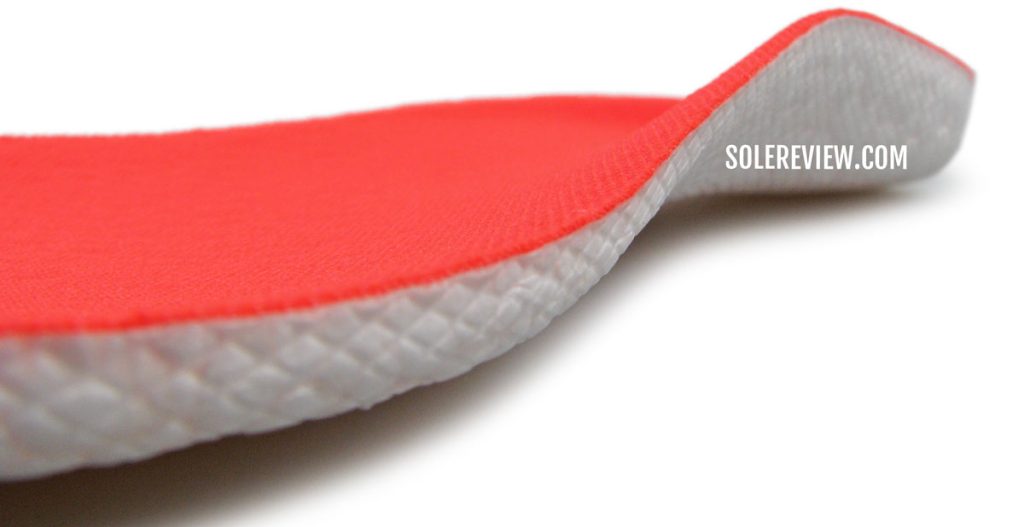
The Ride 16’s insole is made of Pwrrun+ E-TPU foam. It’s thick enough to be replaced by a stability Orthotic.
A recent development has suddenly turned some Saucony models into orthotic-friendly running shoes. Instead of the earlier set-up of a ‘Topsole’ and insole, models like the Triumph 21’s and Guide 16’s insoles are made of expanded PU foam that Saucony calls Pwrrun+.
These new footbeds are thick enough (around 8 mm) to be substituted with an orthotic.
1) Saucony Triumph 21
The Triumph 21 is an underrated running shoe that gets many things right.
The tall Pwrrun+ midsole (expanded PU foam) makes it an excellent trainer for long runs and marathons. It’s also durable enough to withstand the rigors of everyday training. Our review has more about this versatile running shoe.
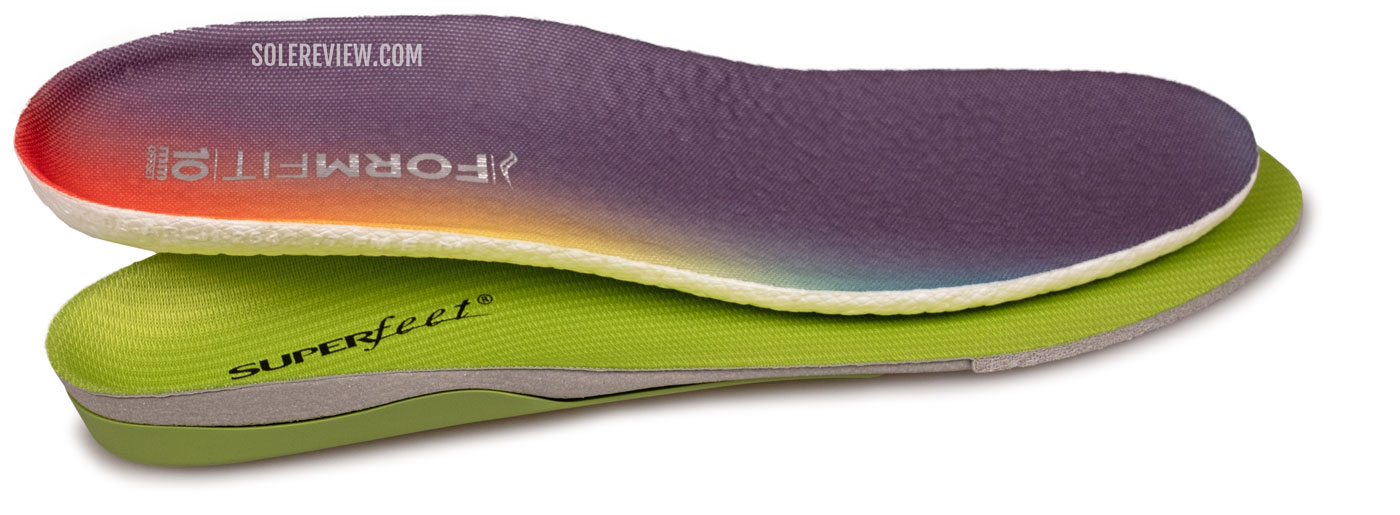
The Pwrrun+ insole can be replaced with another insole – be it a Superfeet (pictured) or custom-made orthotic.
Its stock Pwrrun+ footbed is what makes the Triumph 21 an orthotic-friendly shoe. Unlike most running shoes, the Triumph 21 (and many other Saucony models) have a thick insole made of E-TPU foam. This means that it’s easier to replace it with a custom insole without affecting the upper fit.
Off-the-shelf insoles like the Superfeet Green can be used with the Triumph 21. Just keep in mind that a firmer insole will change the overall cushioning character of the shoe.
2) Brooks Beast 20
The Brooks Beast 20 is the antithesis of modern running shoe design. It’s got a 12 mm heel drop and weighs nearly 12 ounces. It doesn’t use contemporary cushioning tech or hyper-lightweight uppers. At $160, it’s not cheap either.
And yet, the Brooks Beast is immensely popular. Its wide midsole, generous outsole coverage, and raised sidewalls (aka the Guiderails) live up to its ‘stability’ character. This is also a deeply cushioned shoe, thanks to the thick EVA foam midsole and removable insole.
The soft insole and roomy fit make the Beast 20 suitable for Orthotics. As long as the orthotic’s thickness doesn’t exceed that of the stock insole, the upper will fit as it should – without having to upsize.
3) Saucony Echelon 9
The Echelon is a stability shoe, but not the traditional kind. There’s no ‘stability’ feature like a medial post or raised midsole edges.
Nonetheless, the Echelon 9 is a very supportive running shoe. An ultra-wide outsole footprint produces a very stable ride, and the Pwrrun foam midsole adds cushioning comfort for everyday runs.
Also included is a thick PU sockliner that adds a layer of step-in softness. This footbed is thick enough to be replaced with an aftermarket or custom orthotic.
The Saucony Echelon 9 looks nothing like the Echelon 8. The V9 leaves the old-school design behind and adopts a visual language that’s similar to other Saucony shoes.
4) Brooks Dyad 11
Except for the minor upper redesign, the Brooks Dyad 11 is very similar to the 10. The ride is identical due to the same midsole and outsole.
In sensory terms, we’d describe the Dyad 11’s ride as very supportive and cushioned – but with a firm undertone. The wide midsole produces a planted feel, and the full rubber outsole delivers smooth transitions with a good road grip. There are multiple flex grooves so the shoe isn’t as stiff as it appears.
One of the factors that make a running shoe orthotic-friendly is its spacious upper; the Dyad 11 passes that test. There’s enough room to accommodate slight changes in the insole thickness. It helps that the Dyad’s stock insole is fairly thick to begin with.
By the way – if the Brooks Dyad 10 can be had at a bargain, do that. The 10 and 11 are nearly identical.
5) Brooks Addiction GTS 15
What is the Addiction GTS 15? It’s a supportive shoe with an ultra-wide midsole and outsole, but minus a medial post. The midsole uses raised sidewalls – aka the Guiderails – to cup the foot on both sides.
That’s all good, but there’s a reason why the Addiction GTS features here. Its spacious upper can comfortably fit an orthotic once the stock insole is removed.
The roomy upper means that the fit performance isn’t adversely affected after inserting an aftermarket insole.
6) Saucony Ride 16
The Saucony Ride 16’s Pwrrun+ foam (E-TPU) insole makes it suitable for aftermarket footbeds.
It’s thick enough to be replaced with an insole of your choosing, so that will not affect the upper fit. The upper also has more room than the previous model because of the lightweight mesh and updated interiors.
Despite all the changes, the Ride 16 continues to be an excellent neutral trainer for different use cases.
The taller foam stack and Pwrrun+ insole make the shoe more comfortable for high-mileage runs, whereas the firm midsole and rocker profile make the transitions efficient. It’s very similar to last year’s Ride 15, as the Ride 16 uses the same midsole and outsole.
7) Saucony Guide 16
The Guide 16 is the ‘stability’ version of the Ride 16, but in the absence of a medial post, both shoes are somewhat alike.
For example, both share a similar design language – be it the tall midsole or the flush outsole geometry. Even the upper materials and construction appear similar from afar.
They’re not identical though; the Guide 16 has a plastic support structure on the medial side. This feature adds stability to the inner midsole.
That being said, the Guide has a ‘supportive neutral’ character without any bias. Just like the Ride 16, the Guide is a versatile trainer that works for daily runs of various paces and mileage.
The removable Pwrrun+ insole is shared by both models. This isn’t your regular EVA footbed, but a cushy layer of foam that’s thick enough to be replaced with an aftermarket Orthotic. The Guide 16 has Guide 15 are based on the same midsole, so our Guide 15 review is a helpful reference.
Do you own any of these shoes? Improve this review by sharing your insights – submit a review here.

